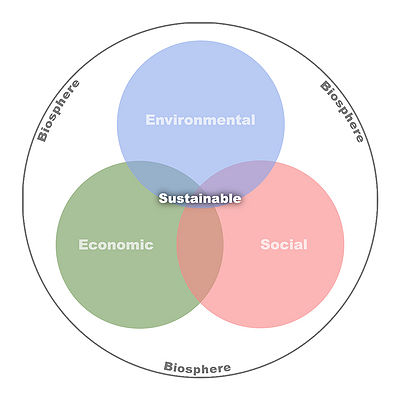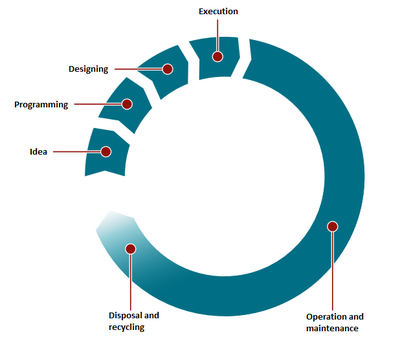Sustainability in construction
Construction is accountable for a great part of the world’s total energy and resource consumption. It is therefore highly crucial that practitioners ensure a sustainable development of construction in order to address the current global climate and environmental challenges. This requires both an environmental, social and economic point of view to obtain an ambitious effort around sustainability in construction.
The quality of our buildings and the construction environment are important for society in a broad perspective and crucial to people's social activities and well-being. Buildings often have a lifespan that surpasses all other products surrounding us and therefore the consequences of the choices one makes today have long term implications.
Sustainability in construction consists as mentioned of environmental, social and economic dimensions. These three dimensions needs to be weighted balanced from a life-cycle perspective and thought through in every aspect of the construction process. Together these dimensions characterize sustainability in construction and covers a variety of conditions which must be included in the planning of sustainable constructions. This means, that the planning of buildings must be considered from a broad and long term perspective. Further, the sustainability effort must be addressed throughout the entire value chain and the implications should be beneficial for all involving parties.
Contents |
The meaning of sustainability
It seems like every other day we hear someone talk about sustainability. Sustainability can be broadly defined as “meeting the needs of the present generation without compromising the ability of future generations to meet their own needs”. When it comes to describing sustainability in our world, we need to be concerned about three main areas of influence. There are three interconnected spheres of sustainability that describe the relationships between the environmental, economic, and social aspects of our world. These spheres are a related set of concepts that, when taken together, can form a solid ground from which major decisions and actions can be made. Examples of such decisions could include land use planning, surface water management, building design and construction, and even law making. When the concepts contained in the three spheres of sustainability are applied to real world situations, everybody wins. Natural resources are preserved, the environment is protected, the economy isn't harmed, and the quality of life for our people is improved or maintained. Below is a diagram showing the three spheres and how they are related.

